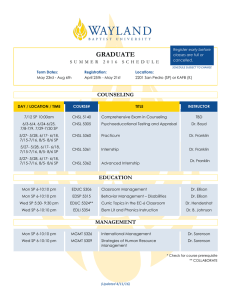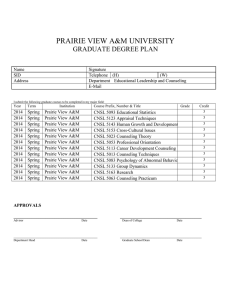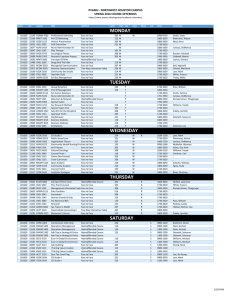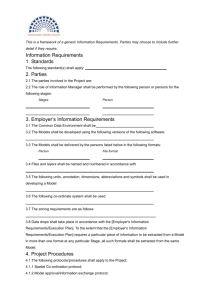Physical Properties of Cashew Nut Shell Liquid Web Site: www.ijaiem.org Email: ,
advertisement
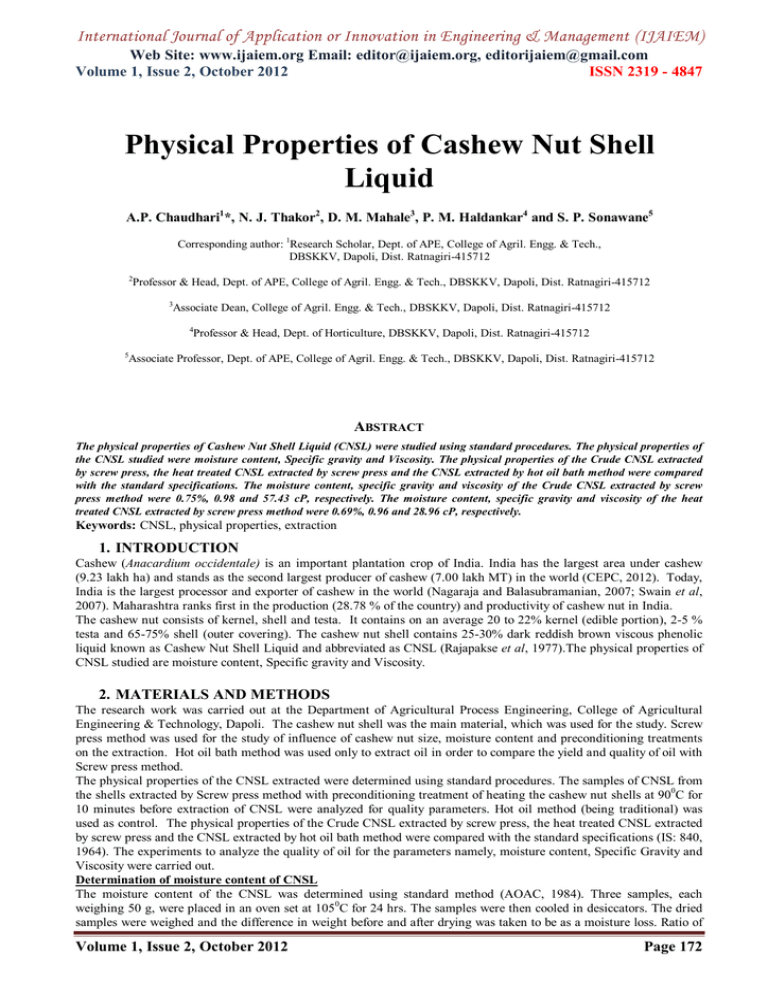
International Journal of Application or Innovation in Engineering & Management (IJAIEM) Web Site: www.ijaiem.org Email: editor@ijaiem.org, editorijaiem@gmail.com Volume 1, Issue 2, October 2012 ISSN 2319 - 4847 Physical Properties of Cashew Nut Shell Liquid A.P. Chaudhari1*, N. J. Thakor2, D. M. Mahale3, P. M. Haldankar4 and S. P. Sonawane5 Corresponding author: 1Research Scholar, Dept. of APE, College of Agril. Engg. & Tech., DBSKKV, Dapoli, Dist. Ratnagiri-415712 2 Professor & Head, Dept. of APE, College of Agril. Engg. & Tech., DBSKKV, Dapoli, Dist. Ratnagiri-415712 3 Associate Dean, College of Agril. Engg. & Tech., DBSKKV, Dapoli, Dist. Ratnagiri-415712 4 Professor & Head, Dept. of Horticulture, DBSKKV, Dapoli, Dist. Ratnagiri-415712 5 Associate Professor, Dept. of APE, College of Agril. Engg. & Tech., DBSKKV, Dapoli, Dist. Ratnagiri-415712 ABSTRACT The physical properties of Cashew Nut Shell Liquid (CNSL) were studied using standard procedures. The physical properties of the CNSL studied were moisture content, Specific gravity and Viscosity. The physical properties of the Crude CNSL extracted by screw press, the heat treated CNSL extracted by screw press and the CNSL extracted by hot oil bath method were compared with the standard specifications. The moisture content, specific gravity and viscosity of the Crude CNSL extracted by screw press method were 0.75%, 0.98 and 57.43 cP, respectively. The moisture content, specific gravity and viscosity of the heat treated CNSL extracted by screw press method were 0.69%, 0.96 and 28.96 cP, respectively. Keywords: CNSL, physical properties, extraction 1. INTRODUCTION Cashew (Anacardium occidentale) is an important plantation crop of India. India has the largest area under cashew (9.23 lakh ha) and stands as the second largest producer of cashew (7.00 lakh MT) in the world (CEPC, 2012). Today, India is the largest processor and exporter of cashew in the world (Nagaraja and Balasubramanian, 2007; Swain et al, 2007). Maharashtra ranks first in the production (28.78 % of the country) and productivity of cashew nut in India. The cashew nut consists of kernel, shell and testa. It contains on an average 20 to 22% kernel (edible portion), 2-5 % testa and 65-75% shell (outer covering). The cashew nut shell contains 25-30% dark reddish brown viscous phenolic liquid known as Cashew Nut Shell Liquid and abbreviated as CNSL (Rajapakse et al, 1977).The physical properties of CNSL studied are moisture content, Specific gravity and Viscosity. 2. MATERIALS AND METHODS The research work was carried out at the Department of Agricultural Process Engineering, College of Agricultural Engineering & Technology, Dapoli. The cashew nut shell was the main material, which was used for the study. Screw press method was used for the study of influence of cashew nut size, moisture content and preconditioning treatments on the extraction. Hot oil bath method was used only to extract oil in order to compare the yield and quality of oil with Screw press method. The physical properties of the CNSL extracted were determined using standard procedures. The samples of CNSL from the shells extracted by Screw press method with preconditioning treatment of heating the cashew nut shells at 900C for 10 minutes before extraction of CNSL were analyzed for quality parameters. Hot oil method (being traditional) was used as control. The physical properties of the Crude CNSL extracted by screw press, the heat treated CNSL extracted by screw press and the CNSL extracted by hot oil bath method were compared with the standard specifications (IS: 840, 1964). The experiments to analyze the quality of oil for the parameters namely, moisture content, Specific Gravity and Viscosity were carried out. Determination of moisture content of CNSL The moisture content of the CNSL was determined using standard method (AOAC, 1984). Three samples, each weighing 50 g, were placed in an oven set at 1050C for 24 hrs. The samples were then cooled in desiccators. The dried samples were weighed and the difference in weight before and after drying was taken to be as a moisture loss. Ratio of Volume 1, Issue 2, October 2012 Page 172 International Journal of Application or Innovation in Engineering & Management (IJAIEM) Web Site: www.ijaiem.org Email: editor@ijaiem.org, editorijaiem@gmail.com Volume 1, Issue 2, October 2012 ISSN 2319 - 4847 moisture loss to weight of wet material in percentage was recorded as moisture content wet basis. The moisture content of the CNSL percent (wb) is expressed as follows: Moisture content, % = W1 W2 W1 100 Where: W1 = Initial weight of sample before drying, g. W2 = Weight of sample after drying, g. Determination of specific gravity of CNSL The specific gravity was determined by using pycnometer bottles following the method of Ranganna (2009) at the Department of Agriculture Chemistry and Soil Science. The tare weight of clean dry pycnometer filled with recently boiled and cooled distilled water at 20-23 0C was noted. The stopper was inserted, and the bottle was incubated in a water bath at 30 0 +0.2 0C for 30 min. The bottle was removed from the bath, wiped dry and weighed. The weight of water was noted. The sample of oil was cooled to 20-250C and filled in the pycnometer to overflowing. Care was taken to avoid air bubble. The stopper was inserted and the bottle was incubated in a water bath at 300 +0.20C for 30 min. Any oil on the outer surface was carefully wiped off. The bottle was cleaned, dried thoroughly and weighed. The specific gravity of oil was determined by dividing weight of oil by weight of water as follows: Specific Gravity at 30/300C = Wt .of oil Wt.of water Determination of viscosity of CNSL The viscosity measurements were carried out at 300C using Brookfield viscometer model (DV-II+ Pro). Spindle S64 was used at the speed of 200 RPM for the determination of viscosity of the CNSL samples. Ten replications for each sample were performed. 400 ml of oil sample was taken in beaker and viscosity was measured at 1min interval for its stabilization. 3. RESULTS AND DISCUSSION Moisture content of CNSL The moisture content of the samples of Crude CNSL extracted by screw press, heated CNSL extracted by screw press and the CNSL extracted by hot oil bath method were determined and compared as shown in Table 1. The values of moisture contents obtained are less than the standard permissible values. Table 1 Moisture content of CNSL extracted by screw press and hot oil bath method Sr. No. Type of oil Moisture content, % (wb) 1 Crude CNSL extracted by screw press Heated CNSL extracted by screw press 0.75± 0.01 0.69± 0.01 CNSL extracted by hot oil bath method 0.65± 0.01 2 3 Specific gravity of CNSL The specific gravity of the samples of Crude CNSL extracted by screw press, heated CNSL extracted by screw press and the CNSL extracted by hot oil bath method were determined and compared as shown in Table 2. The values obtained are comparable to the values of the CNSL (0.94 and 0.92) reported by Akinhanmi et al (2008) and the values (0.95 to 0.97) reported by Rajapakse et al (1977). Similar results were obtained by Akpan et al (2006) for castor seed oil. Table 2: Specific gravity of CNSL extracted by screw press and hot oil bath method Sr. Type of oil Specific No. gravity 1 Crude CNSL extracted by 0.98± screw press 0.01 2 3 Volume 1, Issue 2, October 2012 Heated CNSL extracted by screw press CNSL extracted by hot oil bath method 0.96± 0.01 0.96± 0.01 Page 173 International Journal of Application or Innovation in Engineering & Management (IJAIEM) Web Site: www.ijaiem.org Email: editor@ijaiem.org, editorijaiem@gmail.com Volume 1, Issue 2, October 2012 ISSN 2319 - 4847 *n = 10 It is seen that the specific gravity of the Crude CNSL extracted by screw press was found slightly higher than other types of CNSL. The specific gravity of the heated CNSL extracted by screw press and the CNSL extracted by hot oil bath method was found to be same. Viscosity of CNSL The oil viscosity is used in assessing the lubricating properties of oil. The viscosity of the samples of Crude CNSL extracted by screw press, heated CNSL extracted by screw press and the CNSL extracted by hot oil bath method were determined and compared as shown in Table 3. The Viscosity of the samples of Crude CNSL extracted by screw press was found to be 57.43 cP. The viscosity of the samples of heated CNSL extracted by screw press was 28.96 cP and that for the CNSL extracted by Hot oil bath method was 37.69 cP. It is seen that the viscosity of the Crude CNSL extracted by screw press was higher than the other types of CNSL, followed by the CNSL extracted by hot oil bath method, where as the viscosity of the heated CNSL extracted by screw press was lowest. This may be due to the effect of heating the CNSL at high temperature for longer time. Table 3: Viscosity of CNSL extracted by screw press method and hot oil bath method Sr.No Type of oil Viscosity(cP) . 1 Crude CNSL extracted by 57.43± 0.83 screw press 2 Heated CNSL extracted by 28.96± 0.74 screw press 3 CNSL extracted by hot oil 37.69± 0.73 bath method *n = 10 4. CONCLUSIONS The specific gravity of the Crude CNSL extracted by screw press method is 0.98. The specific gravity of the heat treated CNSL extracted by screw press is 0.96.The Viscosity of the Crude CNSL extracted by screw press is 57.43 cP. The viscosity of the heated CNSL extracted by screw press is 28.96 cP and that for the CNSL extracted by Hot oil bath method is 37.69 cP. LIST OF SYMBOLS AOAC CEPC CNSL cP DBSKKV 0 C g kg mm MT IS wb Association of Analytical Chemists Cashew Export Promotion Council Cashew Nut Shell Liquid centipoise Dr. Balasaheb Sawant Konkan Krishi Vidyapeeth degree celcious gram kilogram millimeter Metric Tonne Indian Standards wet basis REFERENCES [1] Akinhanmi T. F., V. N. Atasie and P. O. Akintokun. 2008. Chemical Composition and Physicochemical Properties of Cashew nut (Anacardium occidentale) Oil and Cashew Nut Shell Liquid. Journal of Agricultural, Food, and Environmental Sciences.2 (1): 1-10. [2] Akpan U. G., A. Jimoh and A. D. Mohammed. 2006. Extraction, Characterization and Modification of Castor Seed Oil. Leonardo Journal of Sciences. January-June: 43-52. [3] CEPC. 2012. About Cashew and Cocoa-statistics. Cashew nut Exports Promotion Council of India. [4] http://www.cashewindia.org/php/cepcContents.php?CatID=29 [5] Kachru R P; Gupta R K; Alam A. 1994. Physico-Chemical Constituents and Engineering Properties of Food Crops. Scientific Publishers, Jodhpur. Volume 1, Issue 2, October 2012 Page 174 International Journal of Application or Innovation in Engineering & Management (IJAIEM) Web Site: www.ijaiem.org Email: editor@ijaiem.org, editorijaiem@gmail.com Volume 1, Issue 2, October 2012 ISSN 2319 - 4847 [6] Mohsenin N N. 1980. Physical Properties of Plant and Animal Materials. Gordon and Breach Science Publishers, New York, USA, Vol. 1. [7] Nagaraja K V;Balasubramanian D. 2007. Processing and value addition in cashew. National seminar on Research,Development and Marketing of Cashew, 20th – 21st November, 89-92. [8] Rajapakse R A; Gunatillake P A; Wijekoon K B. 1977. A Preliminary study on processing of cashew nuts and production of cashew nut shell liquid (CNSL) on a commercial scale in Sri Lanka. J. Ntn. Sci. Coun.Sri Lanka, 5 (2), 117-124. [9] Ranganna S. 2009. Handbook of analysis and quality control for fruit and vegetable products. Edition second. Tata McGraw-Hill Publishing Company Limited. New Delhi. [10] Singhal O P; Samuel D V K. 2003. Engineering properties of biological materials. Saroj Prakashan. Allahabad, 646-647. [11] Swain S K; Gupta J P; Sahoo P K. 2007. Scope for modernization of cashew nut processing in Orissa. National seminar on Research, Development and Marketing of Cashew, 20th – 21st November, 98-99. Volume 1, Issue 2, October 2012 Page 175

